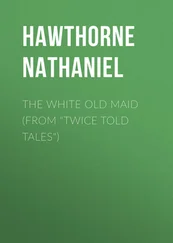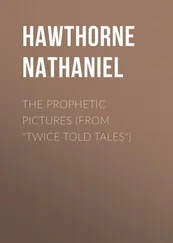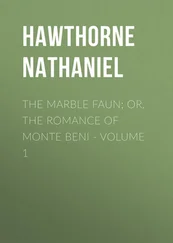Lonely as was Hester’s situation, and without a friend on earth who dared to show himself, she, however, incurred no risk of want. She possessed an art that sufficed, even in a land that afforded comparatively little scope for its exercise, to supply food for her thriving infant and herself. It was the art, then, as now, almost the only one within a woman’s grasp — of needlework. She bore on her breast, in the curiously embroidered letter, a specimen of her delicate and imaginative skill, of which the dames of a court might gladly have availed themselves, to add the richer and more spiritual adornment of human ingenuity to their fabrics of silk and gold. Here, indeed, in the sable simplicity that generally characterised the Puritanic modes of dress, there might be an infrequent call for the finer productions of her handiwork. Yet the taste of the age, demanding whatever was elaborate in compositions of this kind, did not fail to extend its influence over our stern progenitors, who had cast behind them so many fashions which it might seem harder to dispense with.
Public ceremonies, such as ordinations, the installation of magistrates, and all that could give majesty to the forms in which a new government manifested itself to the people, were, as a matter of policy, marked by a stately and well-conducted ceremonial, and a sombre, but yet a studied magnificence. Deep ruffs, painfully wrought bands, and gorgeously embroidered gloves, were all deemed necessary to the official state of men assuming the reins of power, and were readily allowed to individuals dignified by rank or wealth, even while sumptuary laws forbade these and similar extravagances to the plebeian order. In the array of funerals, too — whether for the apparel of the dead body, or to typify, by manifold emblematic devices of sable cloth and snowy lawn, the sorrow of the survivors — there was a frequent and characteristic demand for such labour as Hester Prynne could supply. Baby-linen — for babies then wore robes of state — afforded still another possibility of toil and emolument.
By degrees, not very slowly, her handiwork became what would now be termed the fashion. Whether from commiseration for a woman of so miserable a destiny; or from the morbid curiosity that gives a fictitious value even to common or worthless things; or by whatever other intangible circumstance was then, as now, sufficient to bestow, on some persons, what others might seek in vain; or because Hester really filled a gap which must otherwise have remained vacant; it is certain that she had ready and fairly requited employment for as many hours as she saw fit to occupy with her needle. Vanity, it may be, chose to mortify itself, by putting on, for ceremonials of pomp and state, the garments that had been wrought by her sinful hands. Her needlework was seen on the ruff of the Governor; military men wore it on their scarfs, and the minister on his band; it decked the baby’s little cap; it was shut up, to be mildewed and moulder away, in the coffins of the dead. But it is not recorded that, in a single instance, her skill was called in to embroider the white veil which was to cover the pure blushes of a bride. The exception indicated the ever relentless vigour with which society frowned upon her sin.
Hester sought not to acquire anything beyond a subsistence, of the plainest and most ascetic description, for herself, and a simple abundance for her child. Her own dress was of the coarsest materials and the most sombre hue, with only that one ornament — the scarlet letter — which it was her doom to wear. The child’s attire, on the other hand, was distinguished by a fanciful, or, we may rather say, a fantastic ingenuity, which served, indeed, to heighten the airy charm that early began to develop itself in the little girl, but which appeared to have also a deeper meaning. We may speak further of it hereafter. Except for that small expenditure in the decoration of her infant, Hester bestowed all her superfluous means in charity, on wretches less miserable than herself, and who not unfrequently insulted the hand that fed them. Much of the time, which she might readily have applied to the better efforts of her art, she employed in making coarse garments for the poor. It is probable that there was an idea of penance in this mode of occupation, and that she offered up a real sacrifice of enjoyment in devoting so many hours to such rude handiwork. She had in her nature a rich, voluptuous, Oriental characteristic — a taste for the gorgeously beautiful, which, save in the exquisite productions of her needle, found nothing else, in all the possibilities of her life, to exercise itself upon. Women derive a pleasure, incomprehensible to the other sex, from the delicate toil of the needle. To Hester Prynne it might have been a mode of expressing, and therefore soothing, the passion of her life. Like all other joys, she rejected it as sin. This morbid meddling of conscience with an immaterial matter betokened, it is to be feared, no genuine and steadfast penitence, but something doubtful, something that might be deeply wrong beneath.
In this manner, Hester Prynne came to have a part to perform in the world. With her native energy of character and rare capacity, it could not entirely cast her off, although it had set a mark upon her, more intolerable to a woman’s heart than that which branded the brow of Cain. In all her intercourse with society, however, there was nothing that made her feel as if she belonged to it. Every gesture, every word, and even the silence of those with whom she came in contact, implied, and often expressed, that she was banished, and as much alone as if she inhabited another sphere, or communicated with the common nature by other organs and senses than the rest of human kind. She stood apart from mortal interests, yet close beside them, like a ghost that revisits the familiar fireside, and can no longer make itself seen or felt; no more smile with the household joy, nor mourn with the kindred sorrow; or, should it succeed in manifesting its forbidden sympathy, awakening only terror and horrible repugnance. These emotions, in fact, and its bitterest scorn besides, seemed to be the sole portion that she retained in the universal heart. It was not an age of delicacy; and her position, although she understood it well, and was in little danger of forgetting it, was often brought before her vivid self-perception, like a new anguish, by the rudest touch upon the tenderest spot. The poor, as we have already said, whom she sought out to be the objects of her bounty, often reviled the hand that was stretched forth to succour them. Dames of elevated rank, likewise, whose doors she entered in the way of her occupation, were accustomed to distil drops of bitterness into her heart; sometimes through that alchemy of quiet malice, by which women can concoct a subtle poison from ordinary trifles; and sometimes, also, by a coarser expression, that fell upon the sufferer’s defenceless breast like a rough blow upon an ulcerated wound. Hester had schooled herself long and well; and she never responded to these attacks, save by a flush of crimson that rose irrepressibly over her pale cheek, and again subsided into the depths of her bosom. She was patient — a martyr, indeed but she forebore to pray for enemies, lest, in spite of her forgiving aspirations, the words of the blessing should stubbornly twist themselves into a curse.
Continually, and in a thousand other ways, did she feel the innumerable throbs of anguish that had been so cunningly contrived for her by the undying, the ever-active sentence of the Puritan tribunal. Clergymen paused in the streets, to address words of exhortation, that brought a crowd, with its mingled grin and frown, around the poor, sinful woman. If she entered a church, trusting to share the Sabbath smile of the Universal Father, it was often her mishap to find herself the text of the discourse. She grew to have a dread of children; for they had imbibed from their parents a vague idea of something horrible in this dreary woman gliding silently through the town, with never any companion but one only child. Therefore, first allowing her to pass, they pursued her at a distance with shrill cries, and the utterances of a word that had no distinct purport to their own minds, but was none the less terrible to her, as proceeding from lips that babbled it unconsciously. It seemed to argue so wide a diffusion of her shame, that all nature knew of it; it could have caused her no deeper pang had the leaves of the trees whispered the dark story among themselves — had the summer breeze murmured about it — had the wintry blast shrieked it aloud! Another peculiar torture was felt in the gaze of a new eye. When strangers looked curiously at the scarlet letter and none ever failed to do so — they branded it afresh in Hester’s soul; so that, oftentimes, she could scarcely refrain, yet always did refrain, from covering the symbol with her hand. But then, again, an accustomed eye had likewise its own anguish to inflict. Its cool stare of familiarity was intolerable. From first to last, in short, Hester Prynne had always this dreadful agony in feeling a human eye upon the token; the spot never grew callous; it seemed, on the contrary, to grow more sensitive with daily torture.
Читать дальше












